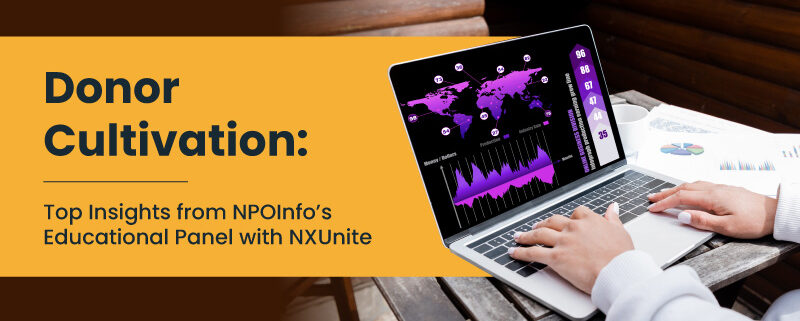Donor Cultivation: Top Insights from NPOInfo’s Educational Panel with NXUnite
NPOInfo’s Brian Lacy joined Amy Boroff of Amplifi and Martha H. Schumacher of Hazen and HILT for NXUnite’s “Cultivating Relationships: Strategies for Getting to Know Your Donors” panel. Each panelist brought their industry expertise to this panel and offered valuable insights into donor cultivation.
Over the course of the hour-long panel, the speakers shared information about building your donor base and answered questions from a live audience Q&A. The panelists provided tips for organizations new to donor cultivation, strategies for starting donor cultivation initiatives, and guidance on building sustainable cultivation practices.
Here are three key takeaways from the discussion:
Understanding your current donor base is foundational to donor cultivation. Amy Boroff offered suggestions for learning more about your supporters, highlighting surveys as a simple way to get to know your donors.
Surveys can be leveraged to understand what current donors are interested in. Ask donors what kinds of programming they would like to see, and learn who has participated in past initiatives.
This is also an opportunity to discover your supporters’ goals for your organization and what motivates them to give. Knowing what drives your supporters to give is an important aspect of conversion, from small appeals to year-end major gifts.
Answers to your survey questions provide valuable insights into your donor demographics and interests. This information can be used to construct your ideal donor profile and focus cultivation efforts on your target supporters.
Highlight Donors’ Impact
Following up with your donors after an event is an essential step in facilitating donor engagement. Phone calls, handwritten notes, or thoughtful gifts are effective ways to recognize supporters. Brian Lacy of NPOInfo also described the importance of communicating an event’s success to supporters, noting that even donors who do not attend events are invested in your organization’s impact.
Lacy suggested dividing your event budget in thirds. One-third of the budget should be spent promoting the event, and the second third should be used for the event itself. The final third of your budget should be dedicated to sharing the success of an event with your supporters.
Talking about what happened at the event and its positive impact shows donors what your organization accomplished with their investment. This encourages them to continue their support.
Reshare Key Points in Donor Communications
When communicating with donors, repetition can ensure that your message reaches the most people. Brian Lacy emphasized that though nonprofit professionals see their communications every day, donors may only see them once. Repeatedly contacting donors allows them to notice and think about your messages.
Repeated communications can be used to target specific audiences. After sending an email to a group of donors, Lacy suggests resending the same email with a different subject line to people who didn’t open the first message.
In addition to increasing email open rate, resending emails with new subject lines provides data on which subject line is most effective. In combination with fundraising data analytics, this data can inform your approach to donor outreach.
Conclusion
Effective communication with current donors and ongoing outreach to potential supporters builds a strong donor base. Through donor cultivation efforts, your organization can foster an engaged donor base and expand your capacity to make an impact.



